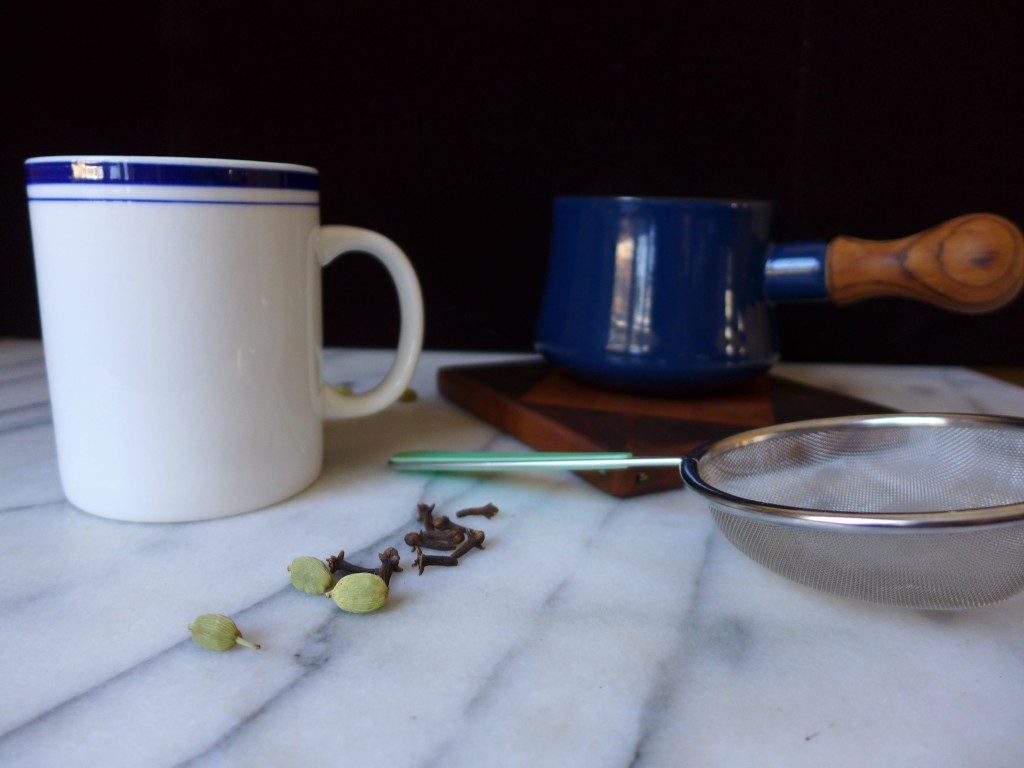Tea is our ingredient of the season this winter. We’re using that as an excuse to sit down more often and relax over a cuppa’. Also, if you find my talk of spices interesting, you may like this post where I use a karha mix to spice up our pumpkin popsicles.
I was stumbling over my computer keys this afternoon while starting this post because I keep wanting to just write chai, but I know that’s not correct, so let’s get some vocabulary out of the way and then get on with this post.
Chai is the word for tea in India. Masala means spiced or spice mix. So technically, when we Americans are drinking a “chai”, we’re really drinking a masala chai, a spiced black tea, not just a tea. Somewhere along the way we shorted masala chai to chai, and so I’ll stick with that abbreviation throughout this post, even though I’m focusing here on the masala. Or is it the karha?…
There’s nothing I like more than a warm cup of chai in my hands on a chilly winter afternoon. In the past I’ve always purchased either the concentrated liquid chai from the grocery store or tea shop’s chai blend for brewing. Today I want to share a beautifully simple and delicious chai recipe that you can use as the base for personalizing your cup of tea.
Traditional Karha
Another new word: karha. It’s the name for the spice blend used for making the masala chai. Traditionally, the karha begins with a combination of warming spices. This is commonly cardamom with some ginger, cloves, cinnamon, star anise, or nutmeg; all spices that we are familiar with when baking. In addition to those spices, some karha may include black pepper, fennel seeds, or coriander. You can also add spices like tumeric for their medicinal value. And those lists are not exhaustive, if there’s a spice you like, it’s fair game!
There are no hard and fast rules when it comes to the spice mixture. In India, the karha varies by region and even by the time of year. And likewise, outside of India, different regions of the world add different spices to their tea depending upon a region’s access to different spices and its palette.


